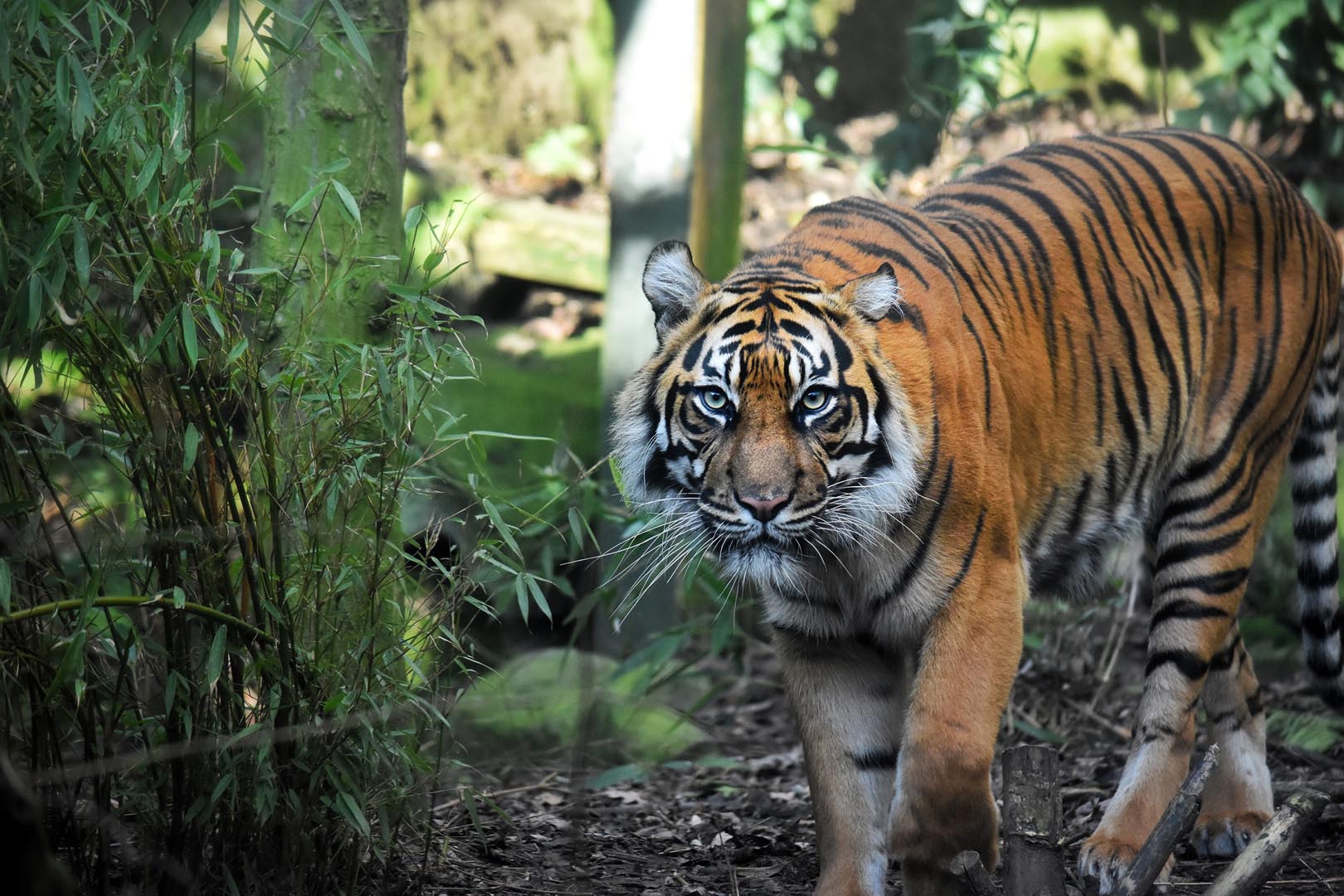Sumatran tiger
Panthera tigris sumatrae

We have two Sumatran tigers here at Edinburgh Zoo - a female named Dharma and a male called Lucu.
Dharma was born in May 2017 and arrived in Edinburgh from Fota Wildlife Park in April 2019.
Lucu was born in 2016 and arrived from Paignton Zoo in November 2020.
Population
Decreasing
Diet
Carnivore
Habitat
Rainforest
Fact file
Tigers are the largest of all big cats and one of the largest carnivorous land mammals in the world. Sumatran tigers are the smallest tiger subspecies
Sumatran tigers are the rarest species of tiger, classified as Critically Endangered. It is estimated there are as few as 300 remaining in the wild
Unlike other big cats, tigers love swimming!
Tigers are excellent jumpers. Even when sitting down, a tiger can leap forward 10 metres
They can run up to nearly 40mph, but only in short bursts. That’s why they’re ambush predators, slowly and silently stalking their prey until they’re ready to pounce
.jpg)
Keep up with our tigers
You’re most likely to see our tigers in the morning or afternoon. It’s a special moment when you see handsome Lucu and beautiful Dharma up close in person or on our cameras.
Watch our tigers live
How we're helping
Poaching of tigers for illegal trade and traditional medicine is rife due to the strong demand for tiger products. Although there are some protected areas, and conservation efforts are continuing, many tigers are killed by poachers even within the protected zones.
The RZSS WildGenes team has been developing a genetic test to identify what wild tigers are eating. This ground-breaking knowledge will help inform conservation efforts helping to reduce the amount of human-tiger conflict in Nepal.
Find out more about our work to protect wild tigers in Nepal
